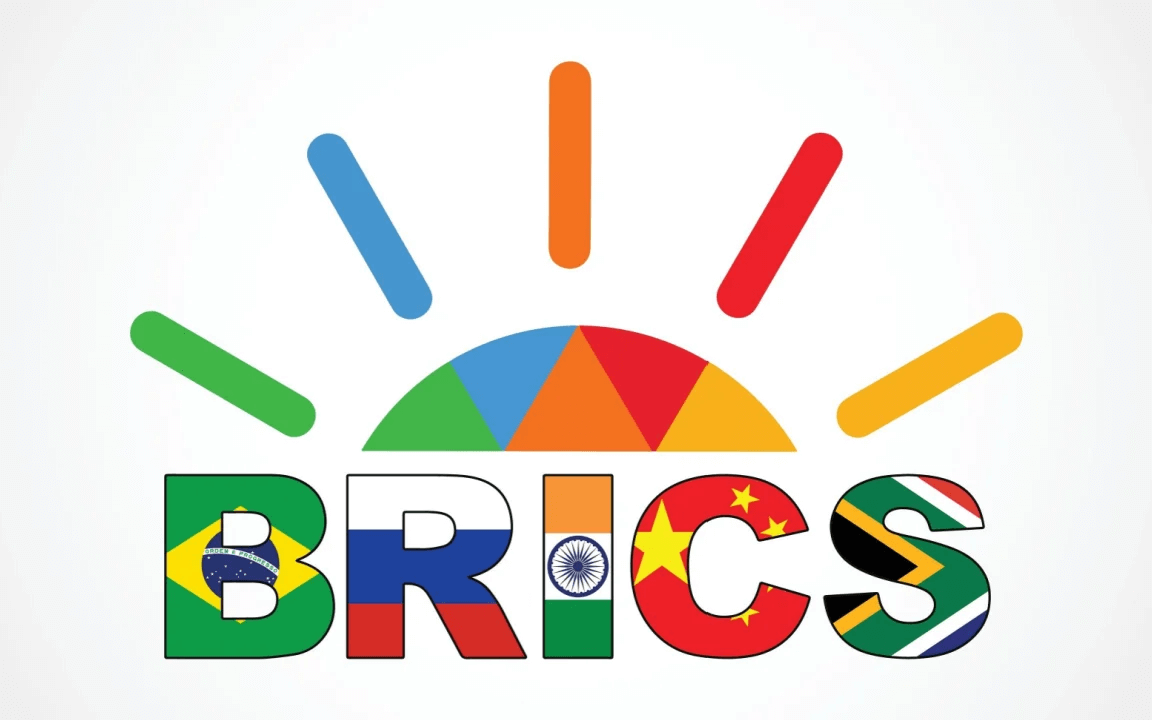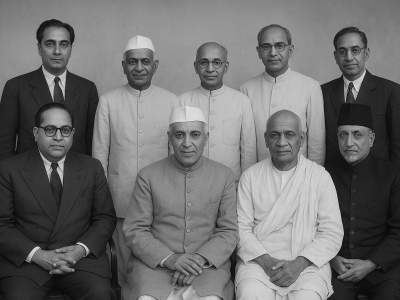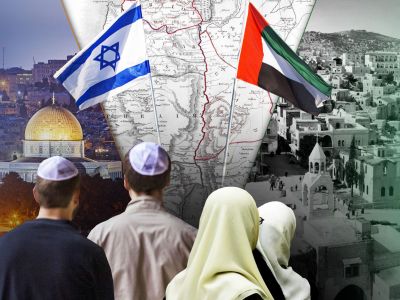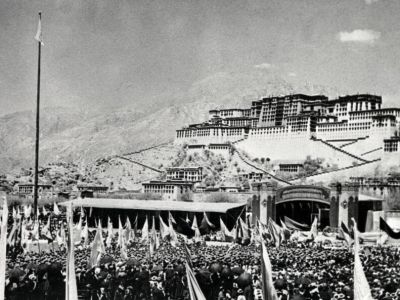BRICS+

The BRICS grouping, comprising Brazil, Russia, India, China, and South Africa, is one of the most dynamic geopolitical and economic entities in the 21st century. The bloc represents a collection of major emerging markets that have the potential to reshape the global political and economic landscape. In this in-depth analysis, we’ll explore the evolution of BRICS, its current trends, key initiatives, trivia, and what the future holds for this diverse group of nations.
The Origins of BRICS
BRICS traces its roots to 2001 when economist Jim O'Neill from Goldman Sachs coined the acronym "BRIC" to describe four fast-growing economies (Brazil, Russia, India, and China) that were rapidly reshaping global trade and investment. The BRIC nations first met formally in 2006, focusing on economic cooperation. In 2010, South Africa joined the group, officially transforming BRIC into BRICS.
BRICS at a Glance: Power in Numbers
BRICS represents a significant portion of the world’s population, landmass, and economy:
Population: BRICS nations account for over 40% of the global population (approximately 3.2 billion people).
GDP: Collectively, BRICS nations represent around 25% of global GDP, with China and India driving much of this growth.
Geographic Reach: The BRICS countries span four continents, giving the group a geographically diverse presence in international diplomacy and trade.
Fun Fact:
First BRICS Summit: The first official BRIC summit was held in Yekaterinburg, Russia, in 2009. South Africa joined in 2010, attending its first BRICS summit in 2011 in Sanya, China.
Key Trends in BRICS: Shaping Global Governance
Over the years, BRICS has developed beyond an economic group into a political and strategic bloc. The group now regularly discusses a range of issues, including trade, defense, security, and global governance reforms. Let’s dive deeper into some of the key trends:
1. BRICS+ Expansion: A Growing Club?
One of the significant trends in BRICS is the idea of expanding its membership. Several countries, including Argentina, Saudi Arabia, Egypt, and Indonesia, have expressed interest in joining BRICS. This expansion initiative, often called "BRICS+", reflects the bloc’s growing appeal as an alternative to Western-led institutions like the G7.
The expansion is seen as a move to enhance BRICS' influence in global decision-making, but it also presents challenges in maintaining coherence among diverse economies. BRICS+ could create a larger platform for cooperation among the Global South, counterbalancing the West’s geopolitical influence.
2. De-dollarization: Moving Away from the Dollar
A major focus for BRICS in recent years has been its collective effort to reduce reliance on the U.S. dollar in international trade. De-dollarization aims to diminish the power of U.S. sanctions and the global dominance of the dollar.
China and Russia, in particular, are strong proponents of this strategy, with discussions about using local currencies for trade within the group. The New Development Bank (NDB), also known as the BRICS Bank, was established in 2014 as an alternative to the IMF and World Bank, promoting greater financial independence for BRICS nations.
3. Technological and Digital Cooperation
BRICS has placed a strong emphasis on digital cooperation, especially in fields like artificial intelligence (AI), cybersecurity, and fintech. Given the rapid digitization of global economies, BRICS sees technology as a key driver for future growth.
India and China, as tech powerhouses, lead the group's technological initiatives. India’s strong IT services sector and China’s advancements in AI and telecommunications have been crucial to shaping BRICS’ tech policies. Joint initiatives in cybersecurity are also a growing priority, especially as BRICS nations face increasing cyber threats.
4. Sustainable Development and Climate Action
As major emerging markets, BRICS nations are grappling with the balance between economic growth and environmental sustainability. The group has committed to collaborating on climate action, energy transitions, and sustainable development goals (SDGs).
Challenges Facing BRICS: A Complex Road Ahead
While BRICS has become a significant player in global economics and geopolitics, the bloc is not without its challenges. The group, comprising five highly diverse nations—Brazil, Russia, India, China, and South Africa—faces internal and external pressures that could impede its growth and unity. These challenges stem from geopolitical tensions, economic disparities, governance structures, and external resistance from established global powers. Below is a detailed examination of the major challenges facing BRICS.
1. Internal Conflicts and Diverging Geopolitical Interests
Perhaps the most significant challenge facing BRICS is the internal conflicts and differing geopolitical interests among its member states. While all BRICS countries share a desire to reform global governance and diminish the dominance of Western powers, their strategic objectives often diverge.
India-China Rivalry
The most prominent example of internal tension within BRICS is the relationship between India and China. These two countries, despite being major players in global trade and economy, have deep-rooted historical and territorial disputes, particularly over the Himalayan border. The 2020 Galwan Valley clash, in which soldiers from both sides were killed, heightened tensions and brought their differences to the forefront.
Although both nations are committed to BRICS, their rivalry complicates cooperation, especially on security issues. India is wary of China's growing influence in the region, particularly through the Belt and Road Initiative (BRI). China, on the other hand, views India’s closer ties with the U.S. and its involvement in initiatives like the Quad (along with Japan, Australia, and the U.S.) as countering its regional dominance. These tensions can spill over into BRICS cooperation, limiting joint action on key global issues.
Brazil’s Political Instability
Brazil’s political landscape has been marked by significant instability, especially in recent years. Shifts in leadership and policy direction have created an unpredictable environment within the country. For example, under former President Jair Bolsonaro, Brazil was more aligned with the U.S. and less enthusiastic about the BRICS platform. The election of President Luiz Inácio Lula da Silva in 2023 has refocused Brazil’s attention on BRICS and its multilateral diplomacy, but political instability remains a challenge. Frequent changes in policy priorities make it difficult for Brazil to sustain consistent engagement with BRICS initiatives.
Russia’s Geopolitical Isolation
Russia’s international isolation, particularly following its invasion of Ukraine in 2022, is another complicating factor for BRICS. While Russia remains a crucial player within the group, its confrontation with the West has created economic challenges for Moscow, such as sanctions, declining foreign investments, and strained trade relations. Additionally, Russia’s aggressive foreign policy stance can create divisions within BRICS, as not all members are eager to align with Moscow’s confrontational approach toward the West. India and Brazil, for instance, have sought to maintain neutrality or pragmatism in their foreign policies, making full-fledged support for Russia’s geopolitical moves difficult.
2. Economic Disparities and Uneven Growth
Another major challenge facing BRICS is the economic disparity between its member states. China’s economic dominance within the bloc is one of the most glaring examples of this disparity. While all BRICS countries are considered emerging markets, China’s economy vastly outpaces the others in terms of size and influence.
China’s Dominance
China’s GDP, which is around $17 trillion (as of 2023), dwarfs that of the other BRICS nations. India’s economy, the next largest, is about $3.7 trillion, while Brazil, Russia, and South Africa trail behind. This imbalance creates the perception that BRICS is heavily influenced by China’s agenda. China’s economic influence through projects like the Belt and Road Initiative (BRI) has led to concerns that Beijing could use BRICS as a platform to advance its own interests rather than the collective goals of the bloc.
Diverse Economic Models
The economic models of BRICS countries are also diverse, adding complexity to coordinated policy efforts. China and India have rapidly growing economies fueled by different sectors—China is the world’s largest manufacturer, while India is a services powerhouse. Brazil and Russia are more reliant on natural resources, and South Africa’s economy is diversified but smaller in scale. These differences mean that their economic needs, priorities, and vulnerabilities vary greatly. For example, Brazil might prioritize agricultural exports, while India might focus on digital services, and Russia on energy exports. These differing priorities can make it difficult to form unified economic policies or joint strategies for global trade negotiations.
3. Governance and Institutional Weaknesses
The institutional structure of BRICS presents another challenge. Unlike the European Union or even the G7, BRICS lacks a formal governance framework with enforceable rules. The group functions more as a platform for dialogue and cooperation rather than an institutionalized body with legal mechanisms. As a result, it struggles with the challenge of turning discussions and agreements into concrete, enforceable actions.
Absence of Binding Agreements
BRICS agreements are largely non-binding, and the group has no centralized authority to ensure that member states adhere to collective decisions. This limits the effectiveness of the group’s initiatives, as each nation is free to pursue its own agenda. For instance, while the BRICS countries have pledged to increase intra-group trade and investment, progress has been slow due to a lack of formal mechanisms to enforce such commitments.
New Development Bank (NDB) Limitations
The New Development Bank (NDB), established by BRICS in 2014, was seen as an alternative to Western financial institutions like the World Bank and IMF. While the NDB has approved loans for numerous infrastructure projects, it remains a relatively small player compared to its Western counterparts. One of the criticisms of the NDB is that it is still heavily influenced by China, both in terms of leadership and financing. The bank’s limited capital base and slow expansion of its project portfolio have also hindered its ability to serve as a true alternative to Western financial institutions.
4. Global Resistance and Western Pushback
As BRICS rises in prominence, it faces increasing resistance from established global powers, particularly the United States and the European Union. Western countries, accustomed to their dominance in global financial and governance institutions, are wary of BRICS’ growing influence and its push for reforms in global governance.
Geopolitical Tensions with the West
The West views BRICS’ efforts to promote de-dollarization, reduce dependence on Western institutions, and challenge Western norms as a direct threat to the current world order. The U.S., in particular, has expressed concern over BRICS initiatives that aim to circumvent the dominance of the dollar in global trade. Western countries are also critical of the group’s more autocratic members, particularly China and Russia, and their human rights records. This ideological clash creates friction between BRICS and the West, with sanctions and trade restrictions being used as tools to limit BRICS’ influence.
Western Financial Hegemony
The global financial system remains dominated by Western institutions, particularly the International Monetary Fund (IMF) and World Bank. Despite efforts to establish alternatives like the New Development Bank and Contingent Reserve Arrangement, BRICS countries still rely on the U.S.-led global financial system for many of their trade and financial transactions. This reliance limits BRICS’ ability to fully disengage from the Western financial order, especially in moments of financial crisis.
5. Global Economic Uncertainty and Crisis Management
The COVID-19 pandemic exposed significant vulnerabilities in global supply chains and economies, including those of BRICS nations. While these countries have recovered at different rates, global economic uncertainty—fueled by rising inflation, supply chain disruptions, and geopolitical instability—poses a significant challenge.
Varying Recovery Rates Post-Pandemic
The BRICS nations have experienced varying recovery rates from the pandemic. China, for instance, was one of the first countries to bounce back, while Brazil and South Africa have struggled with economic stagnation and high unemployment. Russia’s economic recovery has been further hindered by the impact of international sanctions related to its invasion of Ukraine. The disparity in recovery rates makes coordinated economic action difficult, as each country faces different internal challenges and priorities.
Global Supply Chain Disruptions
Global supply chain disruptions, worsened by the pandemic and geopolitical tensions (such as U.S.-China trade wars), have also affected BRICS countries. For example, India and Brazil have faced shortages in critical sectors like technology and healthcare, while Russia has been increasingly isolated from global supply chains. The ability of BRICS to maintain economic resilience amid these disruptions is a key test for the bloc.
The Road Ahead for BRICS+
The challenges facing BRICS are multifaceted, involving internal disagreements, economic disparities, governance weaknesses, and external resistance from established global powers. While the bloc holds great potential to reshape global governance and reduce the dominance of Western powers, it must first navigate these significant obstacles.
If BRICS can manage to reconcile its internal differences and build stronger, more institutionalized mechanisms for cooperation, it could enhance its effectiveness and position itself as a true alternative to the Western-led global order. However, if internal conflicts continue to overshadow collective goals, the group may struggle to reach its full potential in the coming years. For BRICS, the road ahead is both promising and perilous, with its future depending on how well it can address these challenges.
The BRICS countries collectively emphasize the importance of climate justice, arguing that developed countries should bear the primary responsibility for climate change due to their historical emissions.
BRICS Initiatives: A Deeper Look
BRICS has implemented several strategic initiatives that underscore its evolving role in global governance:
1. The New Development Bank (NDB)
Launched in 2014, the NDB was established as an alternative to Western-dominated financial institutions like the World Bank and the IMF. It finances infrastructure and sustainable development projects in BRICS and other emerging markets. The NDB has approved billions in loans for projects, particularly in energy, transportation, and urban development.
2. Contingent Reserve Arrangement (CRA)
The CRA was established as a financial safety net for BRICS nations, helping them deal with short-term balance of payments crises. With a total capital of $100 billion, the CRA aims to provide liquidity support to member states in case of financial shocks, reducing their reliance on the IMF.
3. BRICS Vaccine Initiative
Amid the COVID-19 pandemic, BRICS nations launched a vaccine R&D center to cooperate in vaccine production and distribution, especially in emerging economies. This initiative highlights BRICS' focus on health diplomacy and strengthening healthcare systems in the Global South.
Challenges Facing BRICS
Despite its successes, BRICS faces several internal and external challenges that could hinder its progress:
1. Internal Conflicts and Diverging Interests
BRICS members have significant differences in political systems, economic models, and geopolitical interests. China and India, for example, have ongoing border disputes, while Brazil and South Africa have different approaches to trade and diplomacy.
2. Economic Disparities
China’s economy vastly outstrips those of its BRICS counterparts, leading to concerns about Chinese dominance within the group. China’s Belt and Road Initiative (BRI) has also created concerns among other BRICS members that Beijing is using its economic clout to advance its own geopolitical agenda.
3. Western Pushback
As BRICS gains influence, it faces increasing scrutiny and pushback from Western powers, particularly the United States and the European Union. The BRICS countries have been criticized for their stance on issues such as human rights and democracy, creating diplomatic tensions with Western countries.
Trivia: The Lighter Side of BRICS
BRICS Cities: The BRICS summit is often held in unique cities that symbolize the host nation’s culture and economic prowess. Past host cities include Fortaleza (Brazil), Xiamen (China), Goa (India), and Johannesburg (South Africa).
BRICS Anthem: In 2020, a proposal to create a BRICS anthem was floated at the summit in Moscow, though it has not yet materialized.
BRICS Film Festival: The BRICS Film Festival is an annual event held to promote cultural exchange and cooperation among BRICS nations. Each member state showcases films that reflect their social, economic, and cultural realities.
The Future of BRICS: What Lies Ahead?
The future of BRICS is both promising and complex. With continued economic growth and an increasing desire for greater geopolitical influence, BRICS will likely play a pivotal role in shaping the global order. However, the bloc’s success will depend on its ability to manage internal differences, navigate global challenges, and continue innovating through new initiatives.
In a rapidly changing world, BRICS represents the aspirations of the Global South for a more inclusive, multipolar global system. Whether it can truly reshape the international order remains to be seen, but its growing influence is undeniable.









